News
Q&A with Don Bradley, author of The Lost 116 Pages: Reconstructing the Book of Mormon's Missing Stories December 09 2019
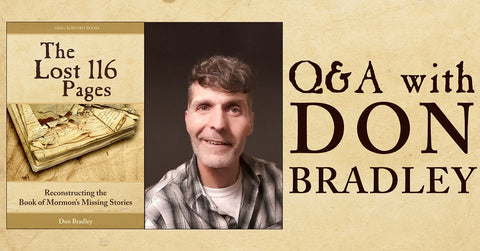
| Download a free sample preview | Order your copy |
For readers less familiar with the "lost 116 pages" can you provide a brief synopsis of what they were and how they became lost?
After Joseph Smith dictated to scribes the first four and half centuries of the Book of Mormon’s chronicle of ancient Jewish settlers in the New World (the Nephites), the manuscript of this account was borrowed by the last of those scribes, Martin Harris. The manuscript later disappeared from Harris’s locked drawer and has been lost to history ever since. The current Book of Mormon text is therefore incomplete, substituting a shorter account for this lengthy missing narrative.
Can you piece together what most likely happened to this lost early manuscript? Does the standard narrative that Lucy Harris likely destroyed them hold up? If not, why and what other possibilities should we consider?
When the manuscript disappeared, Martin Harris initially suspected his wife of the theft. Lucy Harris had been skeptical of her husband’s investment in the book and would have had motive to interfere. Lucy Harris has been regarded as the prime suspect in the theft since the late 1800s, and it has been widely presumed that she burned the manuscript. However, the explanation that Lucy Harris burned the manuscript was first proposed as only a speculative possibility a quarter-century after the fact, but the dramatic image of the disgruntled wife throwing the pages into the flames quickly caught fire and became increasingly popular with time. The further the historical sources get from the actual theft, the more likely they are to tell this story, indicating that it was the story’s sensationalism, rather than its accuracy, that led to its popularity. The first person to have suspected Lucy Harris of the theft, her husband Martin, abandoned this theory when he learned that his estranged but devout Quaker wife had denied on her deathbed knowing what happened to the pages.
The presumption that Lucy Harris stole the pages, acted alone in doing so, and burned them has prevented investigators from looking closely at other suspects, including a number of people who had previously attempted to steal other documents and relics associated with the Book of Mormon. Former treasure digging associates of Joseph Smith had attempted several times to steal the original Book of Mormon—the golden plates. And Martin and Lucy Harris had a son-in-law, a known swindler, who once stole the “Anthon transcript” of characters copied from the plates. Fixating on Lucy Harris as the only possible thief has blinded inquirers to noticing these obvious suspects.
Despite the widespread presumption that Lucy Harris was guilty of taking and burning the manuscript, the manuscript’s ultimate fate is an open question.
You assert that the lost early manuscript might have been longer than 116 pages. Can you provide some reasoning for this? Can you also speculate on how long they may have been?
The number given for the length of the lost manuscript—116 pages—exactly matches the length of the “small plates” text that replaced that manuscript. This coincidence has led several scholars, beginning with Robert F. Smith, to propose that the length of the lost manuscript was actually unknown and the 116 pages figure was just an estimate based on the length of its replacement.
While we can’t know for sure the length of the lost manuscript, unless it turns up, we can do better than just guessing at its actual length, because we have several lines of evidence for this, all of which converge on a probable manuscript size. Joseph Smith reported that Martin scribed on the lost manuscript over a period of 64 days, which, given Joseph’s known translation rate would have produced a manuscript far larger than 116 pages. In line with this, Emer Harris, ancestor to a living Latter-day Saint apostle and brother to Martin Harris, reported at a church conference that Martin had scribed for “near 200 pages” of the manuscript before it was lost. A later interviewer recounted Martin himself reporting a similar scribal output when stating what proportion of the total Book of Mormon text he recorded. Since Martin was not the only scribe to work on the now-lost manuscript but, rather, the fifth such scribe, the manuscript as a whole would have been well in excess of the nearly 200 pages produced by Martin, likely closer to 300 pages. Other lines of evidence within the existing Book of Mormon text point to a similar length for the lost portion.
What sources are used in this book to identify what was in the Book of Mormon's lost 116 pages?
To reconstruct the Book of Mormon’s lost stories this book makes use of both internal sources from within the current Book of Mormon text and external sources beyond that text. Internal sources from the Book of Mormon include, first, accounts from the narrators of the small plates of Nephi, which cover the same time period as the lost portion of Mormon’s abridgment, and, second, narrative callbacks in the surviving remnants of Mormon’s abridgment that refer to the lost stories. External sources used in the reconstruction include statements in the earliest manuscripts of Joseph Smith's revelations describing and echoing the lost pages, statements by Joseph Smith reported by apostles Franklin D. Richards and Erastus Snow, an 1830 interview granted by Joseph Smith, Sr., a conference sermon by Martin Harris’s brother Emer Harris, and reports by several other early Latter-day Saints and friends of Martin Harris.
Can you provide a few examples of how your research into the lost early manuscript has increased your awareness of a Jewish core in the Book of Mormon text?
The research that went into this book has disclosed to me a Jewishness to the Book of Mormon that I could never have imagined. Through the lens of the sources on the lost manuscript, we can see the Jewishness in the Book of Mormon from the very start: according to Joseph Smith, Sr., the lost pages identified the Book of Mormon as beginning with a Jewish festival, namely, Passover. This Jewishness is particularly striking in the sources on the lost manuscript’s narrative of the book’s founding prophets Lehi and Nephi. Their narrative begins in that of the Hebrew Bible, at the start of the Jewish Exile. The recoverable lost-manuscript narratives of Lehi and Nephi show them seeking to build a new Jewish kingdom in the New World systematically parallel to the pre-Exile Jewish kingdom in the Old World. Having lost the biblical Promised Land, sacred city, dynasty, temple, and Ark of the Covenant, they set about re-creating these by proxy.
This Jewishness in the Book of Mormon is paralleled by a distinct Jewishness of the Book of Mormon’s coming forth. Reconstructing a chronology of the several earliest events in the Book of Mormon’s emergence shows every one of these events to have been keyed to the dates of Jewish festivals. In ways not previously appreciated, the Book of Mormon is a richly and profoundly Judaic book.
In your book, you discuss temple worship among the Nephites. Can you summarize some of your findings?
Temple worship stands at the center of Nephite life and of the Book of Mormon’s narrative. The early events of Nephite history, as chronicled in the present Book of Mormon text and fleshed out further in the sources on the book’s lost manuscript, all build toward the ultimate goal of re-establishing Jewish temple worship in a new promised land. Re-establishing such worship required constructing a system closely parallel to that of Solomon’s temple. To meet the requirements of the Mosaic Law, the Nephites would have needed substitutes for the biblical high priest and Ark of the Covenant, with their associated sacred relics. Accordingly, the Nephite sacred relics—the plates, interpreters, breastplate, sword of Laban, and Liahona—systematically parallel the relics of the biblical Ark and high priest, showing how closely temple worship in the Book of Mormon was modeled on temple worship in the Bible.
In what ways are the doctrines in the early lost Book of Mormon manuscript reflected in the doctrines of early Mormonism?
Earliest Mormonism has sometimes been understood as primarily a form of Christian primitivism, the New Testament-focused nineteenth-century movement to restore original Christianity. Yet already when we explore the earliest Mormon text, the lost portion of the Book of Mormon, we find a whole-Bible religion, one weaving Christian primitivist, Judaic, and esoteric strands into a distinctively Mormon restorationist tapestry of faith.
The Book of Mormon’s focus on the temple is also very Mormon. Temple worship among the Nephites not only echoes ancient Jewish temple worship, but it also anticipates temple worship among the Latter-day Saints. The recoverable narratives of the Book of Mormon’s lost pages portray the Nephite temple as not only a place in which sacrifices are performed but also one in which higher truths are taught in symbolic form, human beings learn to speak with the Lord through the veil, and people can begin to take on divine attributes.
What are you hoping readers will gain from your book?
This book’s earliest seed was my childhood curiosity about the Book of Mormon’s lost pages. That seed grew in adulthood when I realized how knowing more about the Book of Mormon’s lost pages could illuminate its present pages. On one level, this new book is a book about the Book of Mormon’s lost text, pursuing the mystery of what was in the lost first half of Mormon’s abridgment. On another level, this is a book about understanding more deeply the Book of Mormon text we do have, since the last half of any narrator’s story is best understood in light of the first half. Researching what can be known about the lost manuscript has helped me to more fully recognize the Book of Mormon’s richness, understand its messages and meanings, and grasp its power as a sacred text. My hope is that recapturing some of the long-missing contexts behind our Book of Mormon will also expand others’ understanding of and appreciation for this remarkable foundational scripture of Latter-day Saint faith and inspire readers to delve deeper into the Book of Mormon.
Don Bradley
December 2019
Who is Lot Smith? Forgotten Folk Hero of the American West November 06 2018

WHO IS LOT SMITH?
LOT SMITH is a legendary folk hero of the American West whose adventurous life has been all but lost to the annals of time. Lot arrived in the West with the Mormon Batallion during the Mexican-American War. He remained in California during much the Gold Rush, and was later a participant in many significant Utah events, including the Utah-Mormon War, the Walker War, the rescue of the Willie & Martin Handcart Companies, and even joined the Union Army during the US Civil War. Significantly, Lot Smith was one of the early settlers of the Arizona territory and led the United Order efforts in the Little Colorado River settlements. What follows is a brief sketch of Lot's service in the Mormon Batallion and the experiences that shaped him.
Lot was reared by a hard-working Yankee father and a devoutly religious mother. His mother passed when he was fourteen. At the impressionable age of sixteen, Lot joined the Mormon Battalion in the Mexican-American War as one of its youngest members. His father passed before he returned to his family. Consequently, his experiences in the Mormon Battalion shaped his life significantly. The struggles of this heroic infantry march of two-thousand miles across the country embedded within him several valuable characteristics.

Lot Smith came to value the comfort of clothing and shoes in the absence thereof. As the battalion march continued, his clothing and shoes wore out. He had only a ragged shirt and an Indian blanket wrapped around his torso for pants. At the death of one of the soldiers, he gratefully inherited the man’s pants. His feet were shod with rawhide cut from the hocks of an ox. Ever after, he never took shoes for granted. It appears that he may have developed an obsession for them. Soon after his arrival in Utah Territory, he was known to have bought himself a pair of shoes that was outlandishly too large. He said that he wanted to get his money’s worth! Years later, he bought thirty pairs of shoes at a gentile shoe shop. When he saw the astonishment of the shopkeeper, he said, “If these give good service, I’ll be back and buy shoes for the rest of my family!” He frequently carried an extra pair of shoes. In at least two recorded instances, he gave an extra pair of shoes to grateful men who were in desperate need. He knew how feet with no shoes felt—sore, bruised and cut.

Smith developed endurance during the Mormon Battalion march. He carried a shoulder load of paraphernalia, walked as many as twenty-five miles or more each day—sometimes dragging mules through the heavy sand. There was no stopping—and absolutely no pampering. When the going got rough, he had to keep going. He suffered extreme heat and freezing nights on the deserts. Through all of these challenges, he learned to laugh at the hardships and to maintain a happy optimistic view of life. He emerged from the Mormon Battalion as a young man who knew he could do hard things.
It is not known how skilled Smith became with a gun during his battalion march, but during his later years in Arizona, he was known to be an expert marksman who could shoot accurately even from the hip. Every morning he took a practice shot. Navajos and Hopis would come from miles around to challenge him. He gained a reputation of the most feared gunman in Arizona.
Smith faced many life-threatening ordeals throughout the rest of his life. Many different kinds of hardships would test his endurance. He faced them with courage, a trust in God, and an upbeat attitude. His example inspired those who followed him. As a significant and beloved military leader, he knew how to succor those under his command. One who served with him in the military said, “We loved him because he loved us first.”
Lot Smith learned many valuable life lessons on the Mormon Battalion march that served him well. Yes, he rid his table of hot pepper—and he should have done away with something else hot—his temper!
 Talana S. Hooper is a native of Arizona’s Gila Valley. She attended both Eastern Arizona College and Arizona State University. She compiled and edited A Century in Central, 1883–1983 and has published numerous family histories. She and her husband Steve have six children and twenty-six grandchildren.
Talana S. Hooper is a native of Arizona’s Gila Valley. She attended both Eastern Arizona College and Arizona State University. She compiled and edited A Century in Central, 1883–1983 and has published numerous family histories. She and her husband Steve have six children and twenty-six grandchildren.

Lot Smith recounts the Mormon frontiersman’s adventures in the Mormon Battalion, the hazardous rescue of the Willie and Martin handcart companies, the Utah War, and the Mormon colonization of the Arizona Territory. True stories of tense relations with the Navajo and Hopi tribes, Mormon flight into Mexico during the US government's anti-polygamy crusades, narrow escapes from bandits and law enforcers, and even Western-style shoot-outs place Lot Smith: Mormon Pioneer and American Frontiersman into both Western Americana literature and Mormon biographical history.
Q&A with Talana S. Hooper for Lot Smith: Mormon Pioneer and American Frontiersman November 01 2018

| Download a free preview | Order your copy |
Q: Give us some background into this book. How did it come together?
A: My grandfather James M. "Jim" Smith was the youngest of Lot Smith's fifty-two children. Since Lot Smith was killed by a renegade Navajo six months before my grandfather's birth, my Grandpa James sought his entire life to learn all he could about the father he never knew. He soon discovered that his father had lived a life which generated myths and legends. He obtained many firsthand accounts which were most often tinged with admiration and love—yet not all were complimentary. Jim Smith's oldest son, my father Omer, recorded the stories and enlisted the help of my mother Carmen to more completely research Lot Smith's history in libraries around the country. When Omer unexpectedly passed, Carmen continued to research, interview, and compile for another thirty years. However, by her mid-nineties, her eyesight had failed enough so that even with her magnifying glass she could no longer see her computer screen well enough to continue. I knew that Lot Smith's life story was too compelling and valuable to be lost. With her blessing and help (while she was still able), I began working to bring the biography together for publication.
Q: For readers who are unfamiliar with Lot Smith, can you give us a basic background of who he was?
A: Lot Smith, a man with a fiery red beard and a temper to match it, experienced firsthand many of the significant events in the early history of The Church of Jesus Christ of Latter-day Saints. His life was one adventure after another. He joined the Mormon Battalion at the age of sixteen and participated in the California Gold Rush. The life lessons he learned during the Mormon Battalion prepared him for a life of service—many times grueling—for the Church and his fellowmen.
Smith continued his military career. His reputation of fearlessness became widely known as a member of the Minute Men Life Guards—the cavalry that defended the Latter-day Saints in the Rockies from Indians. He was a captain of the Life Guards who rescued the Willie and Martin Handcart Companies. Major Smith served a critical role in defending his fellow Saints from what seemed certain annihilation by the US Army by burning their supplies and wagons in the Utah War. For that act, he was hailed as a hero by the Saints, but indicted for treason in the US courts. After Smith fought in the Walker War, he was appointed as a captain in the US Army to guard telegraph lines and mail routes during the American Civil War. During that service, he and his men endured a harrowing, life-threatening chase after unknown Indians who had stolen two hundred horses. Readers will enjoy several interesting trips with Brigham Young when Smith served as an escort guard. Smith lastly served as Brigadier General in the Black Hawk War and then served a mission in the British Isles.
In 1876 Brigham Young called Smith to lead colonization in the Arizona Territory. Young charged Smith to establish the United Order and to befriend the Indian tribes. Both these directives brought more adventures as they struggled to secure a mere livelihood. Smith served as Arizona's first stake president, and his Sunset United Order provided a way station for others colonizing in New Mexico, Arizona, and Mexico. Smith also helped lead Church colonization in Mexico—another ordeal.
Smith was one of the most feared gunmen in Arizona. He several times drew his gun on men meaning harm but pulled the trigger only once. Besides defending his rights as a stockman, he vowed he would never be arrested for polygamy and narrowly escaped arrest many times. His untimely death came from a shot in the back by a renegade Navajo.
Q: Can you give us a scene from Lot Smith's life that you found particularly interesting?
A: It is difficult to choose just one scene from Lot Smith's life to share. I considered the incident when one of his men was accidentally shot during the Utah War or the rescue of the Martin Handcart Company. I remember the death-defying chase up the Snake River in the Civil War. And then I consider the time when he had a shootout with a man hired to kill him. All are incredible events! And yet, I choose simple episodes Smith shared with his sons.
While Smith lived in Arizona, the federal marshals increased their efforts to arrest any polygamists. Smith had four wives in Arizona, so he was a target. He was always on the alert and evaded arrest many times by riding a fast horse and carrying a fast gun. One time when Lot and his sons were shucking corn in the field, a marshal appeared some distance away. Smith told his boys to shock him up in the corn. When the officer rode up, the boys greeted him cordially. The officer never did figure out how Smith escaped the area!
On another occasion, Smith was traveling with his son Al in a wagon. Lot looked up the road to see a man on horseback and said to Al that it looked like a U.S. Marshal. Since Lot was convinced that no deceit could enter the Kingdom of God, he wanted all his posterity to be honest and truthful at all times—even in the face of danger. So when he saw the marshal, he told his son to stay in the wagon and not to lie, or he'd skin him alive. Lot took his gun and hid behind a bush. The officer approached and asked Al if he were Lot Smith's son. Al replied that he was. Then the officer asked where his father was. Al replied, "Right behind that bush beside you." The officer didn't look; he feared Smith's gun. He merely said, "Well, you tell him that I passed the time of day with him," and said good-bye.
Q: There are a lot of myths and legends that surround Lot Smith. Can you talk about a couple and set the record straight?
A: Several preposterous stories have been attributed to Lot Smith—probably because of his reputation as a rough character with a strong personality, and an expert gunman which caused people to fear him. One widespread myth was that he was involved in the Mountain Meadows Massacre. How could Smith, the hero of the Utah War, be in Wyoming and southern Utah at the same time? Yet the myth persisted, and newspapers printed at his death that he was involved in the massacre.
One of the most oft-repeated myths of Lot Smith was that he branded his wives. It was so widely believed that at the death of his wife Jane in 1912, people still speculated if she had been branded.
The myth followed Smith to Arizona. Children of his last wife, Diantha, were told that their mother had been branded. The real story of Smith "branding his wife" involved his second wife Jane after his first wife Lydia had left. While Lot and two of his friends were branding near his home in Farmington, Jane was preparing dinner for her husband and the guests. Jane needed eggs. She went out and spied some eggs in the manger where she couldn't reach without entering the corral. Jane knew that Lot's stallion chased and bit anyone but Lot, but the stallion seemed to be dozing in the far corner of the corral. She reasoned that she could sneak in unnoticed. However, the stallion was not as drowsy as she has assumed. He jerked up his head, shrieked, and charged Jane. Without dropping his branding iron, Lot jumped and ran between his wife and the stallion. When she ducked to go under the fence, he pushed her through with the branding iron. The men at the branding fire watched as Jane twisted to check her nice skirt that she wore for company. The branding iron had cooled enough that it didn't even scorch it. One of the men laughed and said, "That's one that won't get away from you; she's branded!"
Lot, who loved to entertain and enjoyed a sense of humor, was partially responsible for starting the myth. In church meetings after this incident, he arose to bear his sincere testimony. Along with recounting his blessings, he was heard to say on more than one occasion, "And anything I own, I brand—including my wife!"
Q: What do you hope readers will take away from reading this book?
A: Most of all, I want readers of the Lot Smith biography to enjoy the incredible and fascinating life of Lot Smith. His life was one thrilling adventure after another! Since his life entwined significant events in the early history of The Church of Jesus Christ of Latter-day Saints, I hope that readers get an up-close perspective of some of these events.
I hope readers learn through Lot's experiences that trials and hard circumstances can refine us. When Lot was in the Mormon Battalion, he experienced periods of no food, no water, no shoes, and scanty clothing. His compassion for others in similar situations was born. He was always generous to the poor and could never turn away anyone who was hungry even when food was scarce. It seems he often carried an extra pair of shoes to give away freely.
Lot's strong leadership in the colonization of the destitute Arizona Territory in the United Order was phenomenal. Through hard work and wise leadership, the colonists avoided starvation and established homes. I want readers to more fully realize and understand some of the sacrifices our forefathers made to settle the frontier land for future generations.
| Download a free preview | Order your copy |
Dime Novel Mormons awarded Best Anthology at JWHA September 24 2018

Congratulations to Michael Austin and Ardis E. Parshall for Dime Novel Mormons winning the Best Anthology Award at the 2018 John Whitmer Historical Association meeting!
To celebrate the award, we are offering all titles from the Mormon Image in Literature series for 30% off from Sep 24 through Sep 28. Use discount code DIMENOVEL at check out to get the discount.*
|
$22.95 |
$15.95 |
$12.95 |
*Offer valid for US domestic customers only. Limited to available inventory. Ends 9/28/18.
Q&A Part 2 with the Editors of The Expanded Canon: Perspectives on Mormonism & Sacred Texts September 11 2018

Hardcover $35.95 (ISBN 978-1-58958-637-6)
Part 2: Q&A with Brian D. Birch (Part 1)
Q: When and how did the Mormon Studies program at UVU launch?
A: The UVU Mormon Studies Program began in 2000 with the arrival of Eugene England. Gene received a grant from the National Endowment for the Humanities to explore how Mormon Studies could succeed at a state university. A year-long seminar resulted that included a stellar lineup of consultants and guest scholars. From that point forward, the Religious Studies Program has developed multiple courses complemented by our annual Mormon Studies Conference and Eugene England Lecture—to honor Gene’s tragic and untimely passing in 2001. The program also hosts and facilitates events for independent organizations and publications including the Society for Mormon Philosophy and Theology, the Dialogue Foundation, the Interpreter Foundation, Mormon Scholars in the Humanities, Association for Mormon Letters, and others.
Q: How is the UVU Mormon Studies program distinguished from Mormon Studies programs that have emerged at other campuses?
A: Mormon Studies at UVU is distinguished by the explicitly comparative focus of our work. Given the strengths of our faculty, we have emphasized courses and programming that addresses engagement and dialogue across cultures, faith traditions, and theological perspectives. Permanent course offerings include Mormon Cultural Studies, Mormon Theology and the Christian Tradition, Mormon Anthropology, and Mormon Literature. Our strengths lie in areas other than Mormon history, which is well represented at other institutions—and appropriately so. Given the nature of our institution, our events are focused first and foremost on student learning, but all our events are free and open to the public and we welcome conversation between scholars and nonprofessionals.
Q: How long has the annual UVU Mormon Studies Conference been held, and what have been some of the topics of past conferences?
A: As mentioned above, the Mormon Studies Conference was first convened by Eugene England in 2000, and to date we have convened a total of nineteen conferences. Topics have ranged across a variety of issues including “Islam and Mormonism,” “Mormonism in the Public Mind,” “Mormonism and the Art of Boundary Maintenance,” “Mormonism and the Internet,” etc. We have been fortunate to host superb scholars and to bring them into conversation with each other and the broader public.
Q: Where did the material for the first volume, The Expanded Canon, come from?
A: The material in The Expanded Canon emerged came from our 2013 Mormon Studies Conference that shares the title of the volume. We drew from the work of conference presenters and added select essays to round out the collection. The volume is expressive of our broader approach to bring diverse scholars into conversation and to show a variety of perspectives and methodologies.
Q: What are a few key points about this volume that would be of interest to readers?
A: Few things are more central to Mormon thought than the way the tradition approaches scripture. And many of their most closely held beliefs fly in the face of general Christianity’s conception of scriptural texts. An open or expanded canon of scripture is one example. Grant Underwood explores Joseph Smith’s revelatory capacities and illustrates that Smith consistently edited his revelations and felt that his revisions were done under the same Spirit by which the initial revelation was received. Hence, the revisions may be situated in the canon with the same gravitas that the original text enjoyed. Claudia Bushman directly addresses the lack of female voices in Mormon scripture. She recommends several key documents crafted by women in the spirit of revelation. Ultimately, she suggests several candidates for inclusion. As the Mormon canon expands it should include female voices. From a non-Mormon perspective, Ann Taves does not embrace a historical explanation of the Book of Mormon or the gold plates. However, she does not deny Joseph Smith as a religious genius and compelling creator of a dynamic mythos. In her chapter she uses Mormon scripture to suggest a way that the golden plates exist, are not historical, but still maintain divine connectivity. David Holland examines the boundaries and intricacies of the Mormon canon. Historically, what are the patterns and intricacies of the expanding canon and what is the inherent logic behind the related processes? Additionally, authors treat the status of the Pearl of Great Price, the historical milieu of the publication of the Book of Mormon, and the place of The Family: A Proclamation to the World. These are just a few of the important issues addressed in this volume.
Q: What is your thought process behind curating these volumes in terms of representation from both LDS and non-LDS scholars, gender, race, academic disciplines, etc?
A: Mormon Studies programing at UVU has always been centered on strong scholarship while also extending our reach to marginalized voices. To date, we have invited guests that span a broad spectrum of Mormon thought and practice. From Orthodox Judaism to Secular Humanists; from LGBTQ to opponents to same-sex marriage; from Feminists to staunch advocates of male hierarchies, all have had a voice in the UVU Mormon Studies Program. Each course, conference, and publication treating these dynamic dialogues in Mormonism are conducted in civility and the scholarly anchors of the academy. Given our disciplinary grounding, our work has expanded the conversation and opened a wide variety of ongoing cooperation between schools of thought that intersect with Mormon thought.
Q: What can readers expect to see coming from the UVU Comparative Mormon Studies series?
A: Our 2019 conference will be centered on the experience of women in and around the Mormon traditions. We have witnessed tremendous scholarship of late in this area and are anxious to assemble key authors and advocates. Other areas we plan to explore include comparative studies in Mormonism and Asian religions, theological approaches to religious diversity, and questions of Mormon identity.
Download a free sample of The Expanded Canon
Listen to an interview with the editors
Upcoming events for The Expanded Canon:
Tue Sep 18 at 7pm | Writ & Vision (Provo) | RSVP on Facebook
Wed Sep 19 at 5:30 pm | Benchmark Books (SLC) | RSVP on Facebook
Q&A Part 1 with the Editors of The Expanded Canon: Perspectives on Mormonism & Sacred Texts August 29 2018

Hardcover $35.95 (ISBN 978-1-58958-637-6)
Part 1: Q&A with Blair G. Van Dyke (Part 2)
Q: How is the Mormon Studies program at Utah Valley University distinguished from Mormon Studies programs that have emerged at other universities?
A: The Mormon Studies program at UVU is distinguished by the comparative components of the work we do. At UVU we cast a broad net across the academy knowing that there are relevant points of exploration at the intersections of Mormonism and the arts, Mormonism and the sciences, Mormonism and literature, Mormonism and economics, Mormonism and feminism, Mormonism and world religions, and so forth. Additionally, the program is distinguished from other Mormon Studies by the academic events that we host. UVU initiated and maintains the most vibrant tradition of creating and hosting relevant and engaging conferences, symposia, and intra-campus events than any other program in the country. Further, a university-wide initiative is in place to engage the community in the work of the academy. Hence, the events held on campus are focused first and foremost for students but inviting the community to enjoy our work is very important. This facilitates understanding and builds bridges between scholars of Mormon Studies and Mormons and non-Mormons outside academic orbits.
Q: Where did the material for The Expanded Canon come from?
A: The material that constitutes volume one of the UVU Comparative Mormon Studies Series came from an annual Mormon Studies Conference that shares the title of the volume. We drew from the work of some of the scholars that presented at that conference to give their work and ours a broader audience. Generally, the contributors to the volume are not household names or prominent authors that regularly publish in the common commercial publishing houses directed at Mormon readership. As such, this volume introduces that audience to prominent personalities in the field of Mormon Studies. It is not uncommon for scholars in this field of study to look for venues where their work can reach a broader readership. This jointly published volume accomplishes that desire in a thoughtful way.
Q: What are a few key points about this volume that would be of interest to readers?
A: Few things are more central to Mormon thought than the way the tradition approaches scripture. And many of their most closely held beliefs fly in the face of general Christianity’s conception of scriptural texts. An open or expanded canon of scripture is one example. Grant Underwood explores Joseph Smith’s revelatory capacities and illustrates that Smith consistently edited his revelations and felt that his revisions were done under the same Spirit by which the initial revelation was received. Hence, the revisions may be situated in the canon with the same gravitas that the original text enjoyed. Claudia Bushman directly addresses the lack of female voices in Mormon scripture. She recommends several key documents crafted by women in the spirit of revelation. Ultimately, she suggests several candidates for inclusion. As the Mormon canon expands it should include female voices. From a non-Mormon perspective, Ann Taves does not embrace a historical explanation of the Book of Mormon or the gold plates. However, she does not deny Joseph Smith as a religious genius and compelling creator of a dynamic mythos. In her chapter she uses Mormon scripture to suggest a way that the golden plates exist, are not historical, but still maintain divine connectivity. David Holland examines the boundaries and intricacies of the Mormon canon. Historically, what are the patterns and intricacies of the expanding canon and what is the inherent logic behind the related processes? Additionally, authors treat the status of the Pearl of Great Price, the historical milieu of the publication of the Book of Mormon, and the place of The Family A Proclamation to the World. These are just a few of the important issues addressed in this volume.
Q: What is your thought process behind curating these volumes in terms of representation from both LDS and non-LDS scholars, gender, race, academic disciplines, etc?
A: Mormon Studies programing at UVU has always been centered on solid scholarship while simultaneously broadening tents of inclusivity. To date, we have invited guests that span spectrums of thought related to Mormonism. From Orthodox Judaism to Secular Humanists; from LGBTQ to opponents to same-sex marriage; from Feminists to staunch advocates of male hierarchies, all have had a voice in the UVU Mormon Studies Program. Each course, conference, and publication treating these dynamic dialogues in Mormonism are conducted in civility and the scholarly anchors of the academy. Given our disciplinary grounding, our work has expanded the conversation and opened a wide variety of ongoing cooperation between schools of thought that intersect with Mormon thought.
Download a free sample of The Expanded Canon
Listen to an interview with the editors
Tue Sep 18 at 7pm | Writ & Vision (Provo) | RSVP on Facebook
Wed Sep 19 at 5:30 pm | Benchmark Books (SLC) | RSVP on Facebook
Q&A with Charles Randall Paul for Converting the Saints: A Study of Religious Rivalry in America July 06 2018

Hardcover $49.99 (ISBN 978-1-58958-747-2)
Available August 7, 2018
Pre-order Your Copy Today
Q: Give us some insight into your background, how you chose to write about this topic, and your involvement with religious diplomacy.
A: I was raised in northern New Jersey where my high school of 400 kids consisted of three major cliques: Jewish, Roman Catholic and Mainline Protestant. There were four Mormons. I was surprised to find how solid and happy my friends’ families were. How could they be so good without The Truth? In mid life I became interested in how religious and secular societies faced unresolvable conflicts over truth and authority and right values. It seemed God had set up the world for pluralistic contestation, and I tried to figure out why. These issues led me to develop interreligious diplomacy as a mode of interaction that included persuasive contestation between trustworthy advocates.
Q: Tell us briefly about the three case studies in this book. Who are these individuals and how did they differ in their tactics from one another?
A: In the early twentieth century after Utah had been accepted as a state, the major Protestant churches wanted to assure that Mormonism was not accepted as another Christian denomination. John Nutting, a freelance pastor, evangelical/preacher came to Utah with young college age missionaries to save souls that, after hearing his revival teaching or door-to-door witnessing, simply confessed the true Jesus and stopped attending the Mormon church. William Paden, a Presbyterian, educator/activist, helped set up 1–12 grade schools that taught LDS students “true” Christianity along with math and English. He also tried to discredit the LDS leadership, close down the Mormon Church, and educate its youth in the right way. Franklin Spaulding was an Episcopal Bishop intellectual/diplomat that aimed to educate LDS college students in the inconsistences of some of the Mormon Church claims. He hoped to convert the Saints in their pews—urging church leaders that he befriended to change just a few doctrines and join the mainline churches.
Q: You state that ongoing debate between religious ideology is at the heart of what it means to be a pluralistic society. Can you elaborate on this?
A: Humans in societies live by stories that order their lives. Ideological or religious traditions provide the comprehensive order and hope for a better world. These religious stories can seriously challenge the veracity of their rival claimants to truth and authority—making for conflict. Contemporary social conflict theorists have focused almost exclusively on conflicting economic and security interests as the engines for conflict, neglecting the cultural driver that religious tradition provides. I am bringing into focus the potency of conflicting formational stories in any society.
Q: Why isn’t tolerance always the desired outcome? How can two opposing people or groups find meaningful ways of collaboration?
A: Tolerance is a weak social virtue (devoid of trust or good will) that collapses when economic and security crises lead societies to seek for scapegoats. We have found that ideological opponents who engage honestly by means of persuasion actually can come to trust and “enjoy” each other’s bothersome presence. People engage in collaborative co-resistance n many forms—sports being the most obvious—legal, legislative, scientific and commercial realms also absorb non-violent conflict managing procedures. When religion is involved, there is no room for compromise solutions, so some form of sustaining the ideological contest in a mode of persuasion is needed. This is healthy intolerance because it allows critics and rivals to be authentic and to have conversations that matter.
Q: For Latter-day Saints, contention is a particularly discomforting word. In your book, you say that you prefer the term “contestation.” Can you explain what you mean?
A: This is a key to understanding how the LDS can lead in the goal of peace-building in split families or societies. We rightly learn that Jesus and Joseph thought contention—a term based on a root of forcing, twisting, coercing others—was the devil’s work. It includes anger and contempt and resentment and revenge. On the other hand, those who stand for something as witnesses need to elevate the term contestation that means to witness with, for or against something—the root being the testimony of a witness. The design of heaven and Earth seems to include many intelligences with different experiences to which they can respectfully testify without fear or anger. They have different viewpoints and experiences that bring them to conflicting contestants; honestly speaking the truth they see. This is what the Holy Spirit prompts us to do. It is the opposite of contentiousness even though the conflict of interpretation and ultimate concern or story remains. Peaceful tension results from contestation—and that is enough for Zion to thrive. Oneness cannot be identical interpretation and understanding of everything that would make individual existence redundant.
Q: We live in an age of intense ideological polarization. What are you hoping that readers will learn from the case-studies presented in this book?
A: I want them to read the book in the broad context of the problem of pluralism that began, narratively speaking, when Eve was different than Adam. I trace the American system of managing religious conflict as a living aspect of society. As long as it remains in the persuasive mode, it allows free expression in the balancing of ideological drives for hegemony. America is based on a foundation of continually contested foundations. Our culture can thrive on pluralism, not because we follow laws of procedural conflict management, but because we have a deep belief in the value of a worthy rival in religion as well as any other aspect of life. The case studies I show will hopefully move a reader to understand how the desire for a trustworthy opponent is a precious thing that does not come naturally but is essential to the success of a pluralistic society.
Pre-order Your Copy Today
Newell G. Bringhurst Speaking Events April 13 2018

| Date & Time | Location |
| Tue April 24 at 5:30 PM | Benchmark Books, SLC |
| Thur April 26 at 7:00 PM | Writ & Vision, Provo |
| Fri April 27 at 5:00 PM | Main Street Books, Cedar City |
| Sat April 28 at 4:00 PM | Home of Doug Bowen, St. George |

NOW AVAILABLE
“An excellent treatment of an important part of American religious life. Bringhurst succeeds in showing the Mormons as a microcosm of the American population.” — The American Historical Review
“In many regards Bringhurst established the terms on which subsequent scholars would engage race and Mormonism” — W. Paul Reeve, author of Religion of a Different Color: Race and the Mormon Struggle for Whiteness
Sign up for our newsletter to stay informed
about future events and book releases
Five Times Mormons Changed Their Position on Slavery March 28 2018

Mormonism and Black Slavery:
Changing Attitudes and Related Practices, 1830–1865
By Newell G. Bringhurst
Mormon attitudes and practices relative to black slavery shifted over the course of the first thirty-five years of the Latter-day Saint movement, evolving through five distinct phases.
Phase 1 – Opposition to Slavery in the Book of Mormon
Initially Joseph Smith expressed strong opposition to slavery through the pages of the Book of Mormon. While not specifically referring to black people, Mormonism’s foundational work asserted that “it was against [Nephite] law” to enslave those less favored than themselves, namely the dark Lamanites (Alma 27:9; Mosiah 2:13). In fact, the idolatrous Lamanites were the ones who practiced slavery, making repeated efforts to enslave the light-skinned, chosen Nephites. Lamanite slaveholding was cited as proof of this people’s “ferocious and wicked nature” (Alma 50:22). Nephite resistance to the Lamanites was described as a struggle for freedom from bondage and slavery.
Phase 2 –Detachment towards Slavery in Ohio and Missouri
Mormon attitudes toward slavery entered a second phase of deliberate detachment following the formal organization of the Church in 1830. Through the pages of the Church’s official newspaper, the Evening and Morning Star, Joseph Smith and others avoided discussion of this increasingly controversial topic. No mention was made of Book of Mormon verses condemning slavery. A major reason for such deliberate detachment was the establishment of Mormonism’s Zion in Missouri, a slave state. Church officials sought to disassociate themselves from the fledgling Abolitionist movement.
Despite this, the Church found itself compelled to speak out on the issue on two important occasions. The first involved Joseph Smith’s “Revelation and Prophecy on War” brought forth on 25 December 1832 and ultimately canonized as Section 87 in the Doctrine and Covenants. In this apocalyptic document, Smith prophesized that “wars…will shortly come to pass, beginning at the rebellion of South Carolina [and]…poured out on all nations” (D&C 87:1–2). It further declared that the “slaves will rise up against their masters, who shall be marshalled and disciplined for war” (D&C 87:4). Given its explosive implications, this revelation was not disclosed to the general Church membership until two decades later.
By contrast, a second Mormon statement, “Free People of Color” written by W. W. Phelps and published in the July 1833 issue of the Evening and Morning Star, received immediate exposure resulting in dire consequences. Prompting Phelps’s statement was a dramatic four-fold increase in the number of Mormons settling in Jackson County. The article’s stated purpose was “to prevent any misunderstanding . . . respecting free people of color, who may think of coming to . . . Missouri as members of the Church.”[1] However, it had the opposite effect, angering local non-Mormons who expelled the Latter-day Saints from Jackson County.
Phase 3 – Pro-slavery Sympathies in Missouri
By the mid 1830s, Church attitudes toward slavery shifted yet a third time, Church spokesmen affirming support for slavery. In August 1835, the Church issued an official declaration stating that it was not “right to interfere with bond-servants, nor baptize them contrary to the will and wish of their masters” nor cause “them to be dissatisfied with their situations in this life.” Ultimately this statement was incorporated into the Doctrine and Covenants as Section 134. Eight months later, in April 1836, Joseph Smith reaffirmed Mormon pro-slavery sympathies through a lengthy discourse published in the official Latter-day Saints Messenger and Advocate. Smith raised the specter of “racial miscegenation and possible race war” if abolitionism prevailed.[2] He further stated that the people of the North have no “more right to say that the South shall not hold slaves, than the South have to say the North shall.”[3] He referenced the Old Testament, specifically the “decree of Jehovah” that blacks were cursed with servitude.[4] Other church spokesmen echoed Smith’s sentiments, in particular Oliver Cowdery and Warren Parrish. This Mormon shift reflected an increased Mormon presence in the slave state of Missouri during the late 1830s, along with a desire to carry the Mormon message to potential converts in the slaveholding South. But most importantly, it represented strong Mormon reaction against the establishment of a chapter of the American Anti-slavery society in the Mormon community of Kirtland Ohio.
Phase 4 – Anti-slavery Position in Nauvoo
By the early 1840s Smith and his followers shifted their position yet a fourth time, assuming a strong anti-slavery position, most evident during the Mormon leader’s 1844 campaign for U.S. president. In his “Views on the Powers and Policy of the Government of the United States” Smith advocated the abolition of slavery through gradual emancipation and colonization of the freed blacks abroad.[5] He called for the “break down [of] slavery” and removal of “the shackles from the poor black man” through a program of compensated emancipation financed through the sale of public lands.[6] Smith predicted that his proposal could eliminate slavery by 1850. Motivating this changing position were two major factors: one was the Mormon’s forced expulsion from the slave state of Missouri in 1838-39. The second involved demographics, namely the fact that the majority of church members hailed from non-slaveholding regions north of the Mason-Dixon line and from Great Britain. By contrast, a relatively limited number of new converts were drawn from the slaveholding South.
Phase 5 – Pro-slavery Position in Utah Territory
Mormon attitudes and related practices relative to slavery shifted yet a fifth and final time following the death of Joseph Smith in 1844 with the emergence of Brigham Young as the principal leader of the Latter-day Saints who migrated west. Young’s evolving position represented “a bundle of contradictions.”[7] Initially, he advocated a “free soil”[8] stance in a June, 1851, sermon, rhetorically stating, “shall we lay a foundation for Negro slavery? No, God forbid!”[9] Six months later in the wake of his appointment as Utah Territorial Governor, Young retreated from this position. Despite his assertion that “my own feelings are that no property can or should exist in slaves,” Young called on the territorial legislature adopt a form of benevolent indentured servitude to regulate Utah’s small but visible black population.[10] Two weeks later, addressing that same body, he proclaimed himself “a firm believer in slavery,”[11] urging legalization of the Peculiar Institution.[12] On February 4, 1952, the Utah Territorial Legislature passed “An Act in Relation to Service” which Young signed into law, making Utah the only Western territory to allow black slavery. Justifying his action, Young delivered a lengthy discourse in which he promoted a direct link between black slavery and black priesthood denial—the latter practice which he announced publicly for the first time. He further asserted that the two proscriptions were both intertwined and divinely sanctioned.
Four factors prompted Young to promote “An Act in Relation to Service.” First, the measure represented a response to the presence of sixty to seventy black slaves in the territory belonging to twelve Mormon slave owners. Among the most prominent were Apostle Charles C. Rich, William H. Hooper (an important Mormon merchant who served as Utah’s Territorial delegate to Congress), and Abraham O. Smoot, Salt Lake City’s first mayor. Second, Young hoped to secure southern support for Utah statehood. Young noted that there were “many [brethren] in the South with a great amount [invested] in slaves” who might migrate to the Great Basin if their slavery property were protected by law.[13]
Of crucial importance in motivating the Mormon leader was a third factor: his strong, unyielding belief that blacks were inherently inferior to whites in all respects and thus naturally fit for involuntary servitude. He accepted, uncritically, the traditional biblical genealogy that present-day Africans came through the so-called accursed lineage of Canaan and Ham back to Cain, thereby providing divine sanction to their servile condition. Further legitimizing black inferiority was the denial of priesthood ordination to black males, which Young affirmed as “a true eternal [principle] the Lord Almighty has ordained.” He stated: “If there never was a prophet or apostle of Jesus Christ spoke it before, I tell you, this people that are commonly called negroes are the children of old Cain, I know they are, I know that they cannot bear rule in the priesthood.”[14]
A fourth, seemingly counterintuitive factor activated Young: his desire to discourage slaveholding in the territory. A careful reading of the statute’s provisions indicates that it consisted primarily of rules to control and restrict slaveholders, and only, incidentally, proscriptions on black slaves themselves. For example, the act required Utah slaveholders to prove that servile blacks had entered the territory “of their own free will and choice.”[15] It also stated that slaveholders could not sell their slaves or remove them from the territory without the so-called servants explicit consent. In general, “An Act in Relation to Service” contrasted sharply with Southern slaveholding statutes in that it was more akin to the practice of indentured servitude. Later that same year, Young reflected on the act’s impact, claiming that it had “nearly freed the territory of the colored population.”[16] Ultimately, Utah Territorial slavery was completely outlawed through a federal statute enacted in 1862, affecting not just the Mormon-dominated region but all other federal territories as well.
Conclusion
The LDS Church’s ever shifting encounter with the institution of black slavery during the thirty-five years from 1830 to 1865 represents a complex, often contradictory odyssey. This perplexing journey profoundly affected Mormonism’s relationship with black people in general. While the number of blacks that Latter-day Saints actually held in bondage was miniscule, the fact that Brigham Young sanctioned the practice of black slavery in conjunction with his imposition of black priesthood and temple denial underscores slavery’s seminal impact on the now-defunct proscription on black people—such practice viewed as Church doctrine for over one hundred and twenty-five years.
 Saints, Slaves, and Blacks: The Changing Place of Black People Within Mormonism, 2nd ed.
Saints, Slaves, and Blacks: The Changing Place of Black People Within Mormonism, 2nd ed.
By Newell G. Bringhurst
Available April 10, 2018
Pre-order today
[1] Evening and Morning Star, July 1833.
[2] Joseph Smith, “Letter to the Editor,” Latter Day Saints Messenger and Advocate, April 1836
[3] Smith, “Letter to the Editor.”
[4] Smith, “Letter to the Editor.”
[6] Smith, “Views on the Powers and Policy of the Government of the United States.”
[12] Peculiar Institution is another term for Black Slavery.
[13] “Speech [sic] by Gov. Young in Counsel on a Bill relating to the Affican [sic] Slavery.”
[14] Brigham Young, Discourse, February 5, 1852, Bx 1 Fd. 17, Brigham Young Papers, LDS Church Historical Department.
[15] “AN ACT in relation to Service,” Acts, Resolutions and Memorials of the Legislative Assembly of the Territory of Utah (Salt Lake City, 1855), 160–62.
[16] Brigham Young, “Message to the Joint Session of the Legislature,” 13 December 1852, Brigham Young papers.
5 Things We Learned About the Jesus of Nazareth January 22 2018
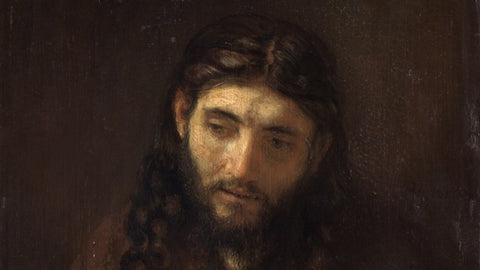
Consider the many different ways Jesus has been portrayed over the centuries or the ways his name has been employed in support of this or that cause. N. T. Wright, a prominent Jesus scholar and Anglican Bishop, observes that he is “almost universally approved of” but for “very different and indeed often incompatible reasons.” If this is the case, then we wondered what Jesus were we worshiping and whether that Jesus was one of our own making?
During the past half-century historians have made significant strides examining the most recently discovered source materials in order to think once again about existing documents like the four Gospels. The aim was to reconstruct the Jesus who the men and women in first-century Palestine would recognize and follow. Jesus was born into an ancient society constrained by millennia of social, theological, and political practices perpetuated by the minority ruling elite and facilitated by a vast majority of souls who knew of no other way. Periodically prophets would rail against the system in the name of God. But the great, colossus of ancient Rome remained sustained through the oppression of individuals, the very individuals that Jesus came to invite into a new, righteous Kingdom.
The Jesus of history and the Gospels largely displaced the conventions of his day with regard to women and the family, as well as the social standing of the poor, the wealthy, and the outcast.
On Women:
In the twenty-first century, when issues regarding the roles of men and women in religious environments are alive and controversial, Jesus’s treatment of women was prescient. His example and the privileges afforded the first female Christians provide important perspectives. The subject takes on added significance as we appreciate the meaning of the priestly roles that women play in Latter-day Saint temples. Echoing what N. T. Wright suggests in his recent book Surprised by Scripture, we must “think carefully about where our own cultures, prejudices, and angers are taking us, and make sure we conform not to the stereotypes the world offers but to the healing, liberating, humanizing message of the gospel.” He continues, “[we live in a time when] we need to radically change our traditional pictures of what men and women are and of how they relate to one another within the church, and indeed of what the Bible says on this subject.”
On the Family:
What little Jesus had to say about the family is jarring to modern ears. He replaced the household of his day with a new universal family called the Kingdom of God where all were brothers and sisters. All were welcome: the poor and the rich, men and women, bond and free, high and low, Jew and Gentile. Members were asked to live in a communal order where everyone had what they needed.
On the Poor:
At the end of Jesus’s ministry, his priorities had not shifted from those he announced by way of the Isaiah text he read as he stood in the synagogue in Nazareth. Prior to his betrayal, Jesus spoke about the Final Judgment. He reminded those who heard him then, as well as those who hear him today, that when our lives are weighed in the balance, we will be judged not on what we know, or how many things we owned, or on how many church meetings we attended; rather, we will be judged on the basis of how well we loved our neighbors, and how well we fed the hungry, clothed the naked, cared for the sick, and visited those in need (Matt. 25:31–46).
On the Wealthy:
Matthew’s Gospel records that Jesus spoke to a “rich young man” who, by his own report, kept all the commandments in Torah, the Mishnah, and the Oral Traditions. Jesus asked him to go one step further and distribute all his wealth equally amongst the poor in order to be a part of God’s kingdom (Matt. 19:21-22). The apocryphal Gospel of Hebrews records that when the young man could not take that step, he “began to scratch his head because he did not like that command.” But then, Mark’s Gospel says, “Jesus felt genuine love for [this man]” (Mark 10:21 NLT).
Father James Martin, in a memoir on his pilgrimage to the Holy Land in 2014, writes about his encounter with the story, standing on the supposed spot where Jesus told it: “Jesus ‘loved him’? Where did that come from? I had heard this Gospel story dozens of times. How had I missed that line? . . . Those three words . . . altered the familiar story and thus altered how I saw Jesus. No longer was it the exacting Jesus demanding perfection; it was the loving Jesus offering [agency]. Now I [and we] could hear him utter those words with infinite compassion for the man. . . . Jesus explicitly offers a promise of abundance to everyone” (Jesus: a Pilgrimage, 271).
Jesus invited all to be bound to him by the “covenant of salt.”
The Covenant of Salt is a three-part obligation. The meaning of the name of the covenant would have been obvious to the men and women who followed him: salt was and is the root word of salvation and it was an enormously valuable commodity in their day. At the end of our study, we came to understand a little better what N. T. Wright observes – that what mattered most to Jesus was that his true disciples were “the kind of people through whom the kingdom will be launched on earth.” Being like Jesus meant that each of us qualified for heaven through serving his “lambs.” Being like Jesus was about loving others and thereby transforming the earth, making it a Godlike place. It was what Jesus earnestly prayed for and by example asked us to pray for: “Thy kingdom come. Thy will be done in earth, as it is in heaven” (Matt. 6:10 KJV; emphasis added). God’s ultimate rule on earth will come about because we, as true disciples of Jesus Christ, are the light of the world and the salt of the earth (Matt.5:13, 14 KJV). We have covenanted. We have come away from this pilgrimage with a resolve to “have salt in ourselves, and have peace one with another” (Mark 9:50 KJV).
James and Judith McConkie will be speaking and signing books at Writ & Vision in Provo, Utah, on Tuesday, January 30 at 7 pm, and at Benchmark Books in Salt Lake City on Wednesday, February 7 at 5:30 pm..These events are free to the public.
 James W. McConkie has JD from the S. J. Quinney College of Law at the University of Utah. His practice has focused in the area of torts and civil rights for more than four decades. He has been an adjunct professor at Westminster College teaching Constitutional law for non-lawyers. He has taught Church History and New Testament courses for BYU’s Division of Continuing Education for over 15 years with his wife Judith and is the author of Looking at the Doctrine and Covenants for the Very First Time. In 2017 he and his law partner Bradley Parker created the Refugee Justice League, a non-profit organization of attorneys and other professionals offering pro-bono help to refugees who have been discriminated against on the basis of their religion, ethnicity, or national origin.
James W. McConkie has JD from the S. J. Quinney College of Law at the University of Utah. His practice has focused in the area of torts and civil rights for more than four decades. He has been an adjunct professor at Westminster College teaching Constitutional law for non-lawyers. He has taught Church History and New Testament courses for BYU’s Division of Continuing Education for over 15 years with his wife Judith and is the author of Looking at the Doctrine and Covenants for the Very First Time. In 2017 he and his law partner Bradley Parker created the Refugee Justice League, a non-profit organization of attorneys and other professionals offering pro-bono help to refugees who have been discriminated against on the basis of their religion, ethnicity, or national origin.
 Judith E. McConkie has an MFA in printmaking from BYU and a PhD in philosophy of art history and museum theory from the University of Utah. She has taught art history at the secondary and then university levels for over 40 years. She was the Senior Educator at BYU’s Museum of Art and Curator of the Utah State Capital during its major renovation project from 2004–2010. During that time she authored With Anxious Care: the Restoration of the Utah Capital. She continues to teach in BYU’s Division of Continuing Education with her husband James. She has published in Sunstone and Dialogue: A Journal of Mormon Though and has presented at Sunstone’s annual symposium. Her prints and watercolors have been exhibited nationally and in the Henry Moore Gallery in London, England. She and James are the parents of three children and 12 grandchildren.
Judith E. McConkie has an MFA in printmaking from BYU and a PhD in philosophy of art history and museum theory from the University of Utah. She has taught art history at the secondary and then university levels for over 40 years. She was the Senior Educator at BYU’s Museum of Art and Curator of the Utah State Capital during its major renovation project from 2004–2010. During that time she authored With Anxious Care: the Restoration of the Utah Capital. She continues to teach in BYU’s Division of Continuing Education with her husband James. She has published in Sunstone and Dialogue: A Journal of Mormon Though and has presented at Sunstone’s annual symposium. Her prints and watercolors have been exhibited nationally and in the Henry Moore Gallery in London, England. She and James are the parents of three children and 12 grandchildren.
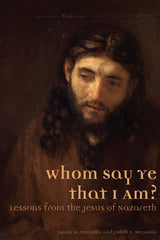 |
Whom Say Ye that I Am? Lessons from the Jesus of Nazareth Available Jan 30, 2018 |
Ebook Flash Sale on Mormon titles starts December 12th! December 11 2017

Greg Kofford Books is pleased to announce our second annual EBOOK FLASH SALE on select titles on Tuesday, December 12th and Wednesday, December 13th! Pick up a few titles that have been on your reading list for as low as $2.99!
Click image below to purchase. Offer is valid for Kindle ebooks only.
 |
Future Mormon: Essays in Mormon Theology |
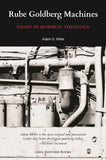 |
Rube Goldberg Machines: Essays in Mormon Theology |
 |
The Mormoness; or The Trials of Mary Maverick: A Narrative of Real Events |
 |
For Zion: A Mormon Theology of Hope |
 |
Who Are the Children of Lehi? DNA and the Book of Mormon |
 |
Fire on the Horizon: A Meditation on the Endowment and Love of Atonement |
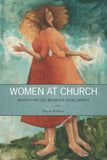 |
Women at Church: Magnifying LDS Women's Local Impact |
 |
Joseph Smith's Polygamy: Toward a Better Understanding |
 |
Knowing Brother Joseph Again: Perceptions and Perspectives |
 |
The End of the World, Plan B: A Guide for the Future |
 |
The Garden of Enid: Adventures of a Weird Mormon Girl, Part One |
 |
Perspectives on Mormon Theology: Apologetics |
Twelve Days of Kofford 2017 November 21 2017
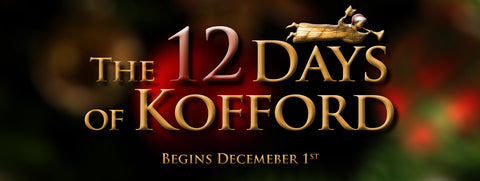
Greg Kofford Books is once again pleased to offer twelve days of discounted holiday shopping from our website!
HERE IS HOW IT WORKS: Every morning from Dec 1th through the 12th, we will be posting a DISCOUNT CODE on our Facebook or Twitter pages. Use this discount code on the corresponding day to receive 30% off select titles. The final day will be an e-book flash sale on Amazon.com.
To help you plan, here are the dates, titles, and sale prices we will be offering beginning Dec 1st. These sales are limited to available inventory. You must follow our Facebook or Twitter pages to get the discount code. Orders over $50 qualify for free shipping. Customers in the Wasatch Front area are welcome to pick orders up directly from our office in Sandy, UT.
Day 1 — Brant Gardner collection
 |
Second Witness, Vol 1: First Nephi $39.95 hardcover |
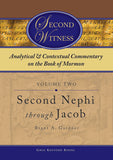 |
Second Witness, Vol 2: Second Nephi through Jacob $39.95 hardcover |
 |
Second Witness, Vol 3: Enos through Mosiah $39.95 hardcover |
 |
Second Witness, Vol 4: Alma $49.95 hardcover |
 |
Second Witness, Vol 5: Helaman through Nephi $39.95 hardcover |
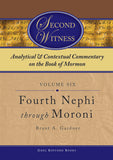 |
Second Witness, Vol 6: Fourth Nephi through Moroni $39.95 hardcover |
 |
The Gift and the Power: Translating the Book of Mormon $34.95 paperback |
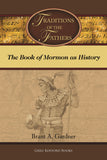 |
Traditions of the Fathers: The Book of Mormon as History $34.95 paperback |
 |
The Garden of Enid: Adventures of a Weird Mormon Girl $22.95 paperback |
 |
The Garden of Enid: Adventures of a Weird Mormon Girl $22.95 paperback |
Day 3 — The Mormon Image in Literature
 |
The Mormoness; Or, The Trials of Mary Maverick: $12.95 paperback |
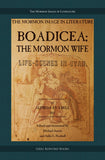 |
Boadicea; the Mormon Wife: Life Scens in Utah $15.95 paperback |
 |
Dime Novel Mormons $22.95 paperback |
 |
Women at Church: Magnifying LDS Women's Local Impact $21.95 paperback |
 |
Mormon Women Have Their Say: Essays from the Claremont Oral History Collection $31.95 paperback |
 |
Voices for Equality: Ordain Women and Resurgent Mormon Feminism $32.95 paperback |
 |
Joseph Smith's Polygamy, Vol 1: History $34.95 paperback |
 |
Joseph Smith's Polygamy, Vol 2: History $34.95 paperback |
 |
Joseph Smith's Polygamy, Vol 3: Theology $25.95 paperback |
 |
Joseph Smith's Polygamy: Toward a Better Understanding $19.95 paperback |
 |
Modern Polygamy and Mormon Fundamentalism: The Generations after the Manifesto $31.95 paperback |
 |
Mormon Polygamous Families: Life in the Principle $24.95 paperback |
 |
Prisoner for Polygamy: The Memoirs and Letters of Rudger Clawson at the Utah Territorial Penitentiary, 1884–87 $29.95 paperback |
 |
Who Are the Children of Lehi? DNA and the Book of Mormon $15.95 paperback |
 |
“Let the Earth Bring Forth”: Evolution and Scripture $15.95 paperback |
 |
Mormonism and Evolution: The Authoritative LDS Statements $15.95 paperback |
 |
Parallels and Convergences: Mormon Thought and Engineering Vision $24.95 paperback |
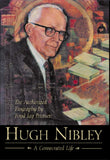 |
Hugh Nibley: A Consecrated Life $32.95 hardcover |
 |
“Swell Suffering”: A Biography of Maurine Whipple $31.95 paperback |
 |
William B. Smith: In the Shadow of a Prophet $39.95 paperback |
 |
LDS Biographical Encyclopedia, 4 Vols $259.95 paperback |
 |
The Man Behind the Discourse: A Biography of King Follett $29.95 paperback |
 |
Liberal Soul: Applying the Gospel of Jesus Christ in Politics $22.95 paperback |
 |
A Different God? Mitt Romney, the Religious Right, and the Mormon Question $24.95 paperback |
 |
Common Ground—Different Opinions: Latter-day Saints and Contemporary Issues $31.95 paperback |
 |
Even Unto Bloodshed: An LDS Perspective on War $29.95 paperback |
 |
War & Peace in Our Time: Mormon Perspectives $29.95 paperback |
 |
The End of the World, Plan B: A Guide for the Future $13.95 paperback |
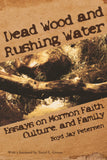 |
Dead Wood and Rushing Water: Essays on Mormon Faith, Culture, and Family $22.95 paperback |
 |
Mr. Mustard Plaster and Other Mormon Essays $20.95 paperback |
 |
Writing Ourselves: Essays on Creativity, Craft, and Mormonism $18.95 paperback |
 |
On the Road with Joseph Smith: An Author's Diary $14.95 paperback |
 |
Hearken O Ye People: The Historical Setting of Joseph Smith's Ohio Revelations $34.95 hardcover |
 |
Fire and Sword: A History of the Latter-day Saints in Northern Missouri, 1836–39 $36.95 hardcover |
 |
A House for the Most High: The Story of the Original Nauvoo Temple $29.95 paperback |
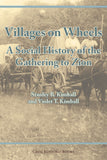 |
Villages on Wheels: A Social History of the Gathering to Zion $24.95 paperback |
 |
Mormonism in Transition: A History of the Latter-day Saints, 1890–1930, 3rd ed. $31.95 paperback |
Day 11 — International Mormonism
 |
Tiki and Temple: The Mormon Mission in New Zealans, 1854–1958 $29.95 paperback |
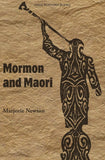 |
Mormon and Maori $24.95 paperback |
 |
The Trek East: Mormonism Meets Japan, 1901–1968 $39.95 paperback |
 |
From Above and Below: The Mormon Embrace of Revolution, 1840–1940 $34.95 paperback |
 |
The History of the Mormons in Argentina $24.95 paperback |
 |
For the Cause of Righteousness: A Global History of Blacks and Mormonism, 1830–2013 $32.95 paperback |
Q&A with Michael Austin and Ardis E. Parshall for Dime Novel Mormons March 13 2017
Order Your Copy Today
Q: For those who are not familiar with the Mormon Image in Literature series, can you explain its purpose and scope?
Mike: The Mormon Image in Literature series is a collaboration between an archival researcher and a literary critic that seeks to reprint the books that shaped the public perceptions of Mormonism in the nineteenth and early twentieth centuries. We will include books by Mormons and books about Mormons, but will focus on works that are hard to find and virtually unknown in the twenty-first century (as opposed to books like A Study in Scarlet and Riders of the Purple Sage, which have been continuously in print since their first publication). Along with faithful reproductions of the texts that scholars can use as primary research texts, each of these volumes contains an introduction and notes that set the works, and their authors, in a context that relates both to the way Mormons were understood by the author and the way the publishing industry in the United States was changing and demanding different kinds of works.
Ardis: These novels have next to nothing to teach me about Mormon history directly—they're too wildly inaccurate to be data sources. What they do give me is a chance to enter the Mormon past, in a sense. I read the words, knowing that readers of a hundred or more years ago read the same words. This is what people thought of us. If I were a missionary, this is what would be in the minds of people behind the doors I knocked on and in the minds of listeners at street meetings. If I were a Mormon mother sending my boy out as a missionary, this is what he would have to face, this is why I might be afraid for him, this is why I would be proud of him. This is what is behind the sneer on the conductor's face when he takes my ticket; this is what brings a curl to the lip of the government employee I appeal to for assistance. I know how I feel and what I think when I read news accounts today, or watch current TV, with caricatures of my behaviors and beliefs; when I read a sensational novel like those in our series, I know what it meant and felt like to a Mormon of the era to read these. We can dress up like pioneers and we can put on pageants about episodes in Mormon history—but that is superficial playacting. Watching the stories of these novels playing out in my imagination, just as they played out in the imaginations of their original readers, seems to me to be much closer to replicating historical reality.
Q: If you ran a bookstore, what section do you think these books would fit best in?
Ardis: Fiction, or historical fiction. I would keep the series together, rather than breaking it up by genre. (The genre mix will be more and more evident as the series continues.)
Mike: I would put them in the fiction section. Or in the Mormon Studies section if I owned one of the handful of bookstores in the world with a Mormon Studies section. And, like Ardis, I would keep the series together.
Q: Granted that the four titles collected in Dime Novel Mormons are not considered “highbrow” literature, can you give me a passage or scene that stood out to you in illustrating how public perception of Mormons may have been influenced by popular media tropes?
Ardis: When the villain Mercer Aldrich/John Leigh is introduced in Dolores, the Danite's Daughter, he is portrayed as handsome and intelligent and well-mannered and well-dressed—everything a woman might want, seemingly. But, of course, his civilized exterior is a mask hiding what he really is: a Mormon! a Danite! a threat! The fact that he can present himself so attractively only underscores the danger by warning readers that they cannot trust their judgment where a Mormon is concerned. That is a trope repeated in many of these novels, whenever a Mormon agent or missionary is among civilized society in the East or in England—it is only when he is among his own evil kind that the character's true nature shows itself.
A flesh-and-blood Mormon missionary who was kind and articulate had two strikes against him when the people he approached had that stock Mormon villain in mind. The more polite an elder was, the more effort he put into personal cleanliness, the more cheerful he was, the more carefully he presented his gospel message, the more at a disadvantage he could be: Isn't he just like the novels portray Mormons? Why, the nicer he is, the more rotten his heart must be, and the more clever he is at concealing his evil intent! There really isn't much a man can do to dispel the expectations of a public primed to expect the worst exactly when he is on his best behavior. In some cases, novelists who are most familiar with the Mormon message have also worked bits of standard missionary presentations into their stories, so that when an elder taught a bit of doctrine, it must have set off alarm bells in the minds of readers—here is a Mormon who not only acts the way these novels have depicted Mormons, he's actually saying what they warned me he would say! He must be just as bad as they say, too!
Mike: In the beginning of The Bradys Among the Mormons, Old King Brady, the nation's most accomplished private detective, is summoned to Washington, DC, to meet with a senator. Utah has become a state, and a candidate for its congressional seat has proposed to the senator's daughter. The senator will allow the marriage, but only if the Mormon, Joseph Smith Podmore, proves to be single and not secretly practicing polygamy.
This book came out right at the start of the Reed Smoot hearings, so it refers to a major public concern of the time. But it also shows a popular dime novel publisher trying to get as much life as possible out of the Mormon stereotypes that had existed for about thirty-five years in this kind of fiction. Brady will travel to Utah and discover a beautiful and modern Salt Lake City, but beneath that city, in a series of tunnels and caverns accessible only to Mormon elders, things go on just as they always have: polygamy, Danites, blood atonement, and all the rest.
I think that the new generation of dime novels that came out at the turn of the twentieth century created modern frames for the previous century's sensational stereotypes of Mormons, which had a lot to do with the perpetuation of those stereotypes and the assumption of many Americans that nothing really changed after the Manifesto.
Q: Was there anything in this collection of stories that surprised you in its depiction of Mormons, whether positive or negative? Anything that did not follow the standard villain tropes of secrecy, sexual deviancy, and violence?
Mike: In Frank Merriwell Among the Mormons, the author takes care to depict the standard Mormon villain—an aging patriarch trying to force a beautiful young maiden to marry him—as a member of a breakaway group of Mormons who are defying the Church. One of the heroes of the story is a young, monogamous, mainstream Mormon who wants to marry the beautiful young maiden in question. Frank Merriwell points out that the rising generation of Mormons are good citizens who are opposed to polygamy. In 1897, in a dime novel, this amounts to something like high praise.
Ardis: Hmm. This one is harder. Nothing comes to mind as surprising in the depiction of Mormons—the maidens are all fair and helpless; the Mormon villains are uniformly despicable; the Gentile heroes are unfailingly perfect specimens of stalwart American manhood.
One element that I hadn't been aware was so prevalent in these books is that the Mormon landscape is shown to be as malevolent as the Mormon soul. There is that vast underground network of dimly-lit caverns beneath Salt Lake City, all interconnected by natural tunnels, their walls sometimes dripping with lake water, their dead-ends dropping off suddenly into bottomless pits, their acoustics so perfect that our heroes can eavesdrop on secret Danite conversations without their own voices or footsteps betraying their presence to those Danites. The natural twists and turns in those tunnels and caverns somehow magically line up with the geometric regularity of the surface, so that the house of every prominent Mormon, built on Salt Lake's straight streets and right-angled blocks, has easy access to the subterranean world. Even the mountain hideouts have magical qualities. Danites, and eventually our heroes, can pass into and out of valleys by means of caves and secret passages.
I understand that readers of dime novels were probably not familiar with the legitimate writings of naturalists and army surveyors and the great Western explorers who report no trace of such geographic features, but it's still a bit surprising to me that readers of these stories could suspend their disbelief in such weird and abnormal landscapes in order to enter into the story. So, you have no faith in the basic humanity of tens of thousands of Mormons? Okay, but how does that translate into your lack of faith in the integrity of the natural world? That, in some ways, surprises me.
Q: This has already been addressed in passing, but I’d like to make it an explicit focus: How would you address readers who may be concerned that the books collected in this volume are often stigmatized as being “anti-Mormon” literature?
Mike: Oh, there is no question that these are anti-Mormons books—much more so than anything being produced today. But these portrayals are not unrelated to depictions of Mormons in some kinds of contemporary literature—the modern mystery novel, for example, where there are still Danites and blood atonement in some places. It is important for Latter-day Saints to understand the history of how we have been portrayed because that history has had consequences that we are still living with. It is always worth our time to learn the history of ideas and perceptions that are still with us today.
Ardis: They are anti-Mormon books—they falsify Mormon doctrine and character and intent; they shaped and promoted anti-Mormon feeling that extended from the novels into the real world and persists to the present. The question for me is, “Granted that these are anti-Mormon books, is there any good purpose in reprinting them, in reading them?” And I would answer that with a shouted “Yes!”
You won't learn anything about Mormonism here, but you will learn—in a sometimes delightful way, if you can turn off the natural tendency to take offense—quite a bit about the world that Mormons lived in or confronted whenever they looked outside Mormondom. You'll better understand where these warped views come from when you hear them repeated in some form today.
And I wouldn't hesitate to recommend that anybody, young or old, Mormon or not, read these stories, recognizing them for what they are. I agree with something Boyd K. Packer said in 1976 in a fireside address about the arts: “Teachers [readers in this case] would do well to learn the difference between studying some things, as compared to studying about them. There is a great difference.” Readers aren't reading anti-Mormonism in these novels to adopt that view themselves; they're reading about it, to understand and face it.
Q: Can you give us a glimpse as to what is yet in store for the Mormon Image in Literature series?
Mike: The next few volumes will focus on some of the literature produced by Mormons in the nineteenth century. We are working on a critical edition of Orson F. Whitney's Elias, for example, and on the collected works of Josephine Spencer, which have never been published before.
Ardis: I'm especially excited for two books written by Mormon women, which are as different as can be from the dime novels. The first is one or more volumes of the collected short stories of Josephine Spencer who saw well beyond her own time, and the other is the novel Venna Hastings by Julia Farr (the pseudonym of a woman I had been chasing through history before realizing she was a novelist). Both of these present a Mormon image that is positive, generally not preachy, and which Mormons at the turn of the twentieth century could read with interest—and maybe a sigh of relief that for once they could see themselves, not caricatures, on the printed page.
Along with these, you can look forward to mysteries, love stories, comedies, an outrageous depiction of missionaries that sparked a national investigation, high-minded or well-intentioned religious prose—just about every genre imaginable, except perhaps science fiction.
Order Your Copy Today
On the twelfth day of Kofford: $1.99 flash sale on Kindle e-books! December 12 2016

On the twelfth day of Kofford, fill your digital stockings with our HUGE e-book promotion. Today only, each of the following titles are only $1.99 on Kindle! PLUS, to help you prepare for the upcoming D&C year in Gospel Doctrine class, we are offering B. H. Robert's classic six-volume A Comprehensive History of the Church on Kindle for only $3.99!
This flash sale ends at midnight tonight (Dec. 12th)
On the eleventh day of Kofford: 30% off Mormon Image in Literature titles! December 11 2016
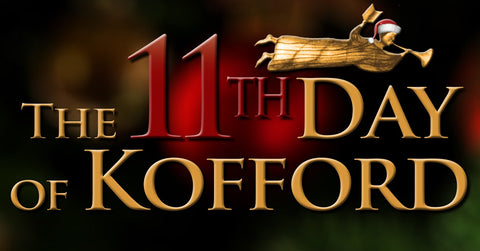
Mormon Image in Literature titles are 30% off December 11th. These special prices are only available for one day, so don't wait!
Orders over $50 qualify for free shipping. Also, local Utah customers can opt to pick up their order directly from our office in Sandy (select this option under the shipping menu).
For more information about the Twelve Days of Kofford holiday sales, click here.
 |
The Mormoness; Or, The Trials Of Mary Maverick: A Narrative Of Real Events Retail: $12.95 |
 |
Boadicea; the Mormon Wife: Life Scenes in Utah Retail: $15.95 |
On the tenth day of Kofford: 30% off war and peace titles! December 10 2016
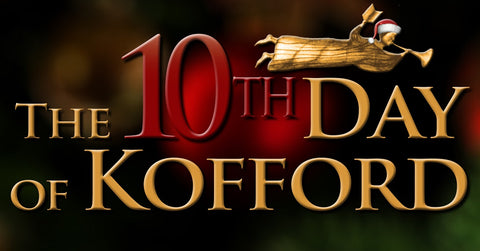
War and peace titles are 30% off December 10th. These special prices are only available for one day, so don't wait!
Orders over $50 qualify for free shipping. Also, local Utah customers can opt to pick up their order directly from our office in Sandy (select this option under the shipping menu).
For more information about the Twelve Days of Kofford holiday sales, click here.
 |
War & Peace in Our Time: Mormon Perspectives Retail: $29.95 |
 |
Even unto Bloodshed: An LDS Perspective on War Retail: $29.95 |
 |
The End of the World, Plan B: A Guide for the Future Retail: $13.95 |
 |
Saints of Valor: Mormon Medal of Honor Recipients, Updated 2nd Edition Retail: $31.95 |
On the ninth day of Kofford: 30% off biography titles! December 09 2016

Biography titles are 30% off December 9th. These special prices are only available for one day, so don't wait!
Orders over $50 qualify for free shipping. Also, local Utah customers can opt to pick up their order directly from our office in Sandy (select this option under the shipping menu).
For more information about the Twelve Days of Kofford holiday sales, click here.
 |
Hugh Nibley: A Consecrated Life Retail: $32.95 Best Biography Award, Mormon History Association |
 |
“Swell Suffering”: A Biography of Maurine Whipple Retail: $31.95 Best Biography Award, Mormon History Association |
 |
William B. Smith: In the Shadow of a Prophet Retail: $39.95 Best Biography Award, John Whitmer Historical Association |
 |
The Man Behind the Discourse: A Biography of King Follett Retail: $29.95 |
On the seventh day of Kofford: 30% off polygamy titles! December 07 2016
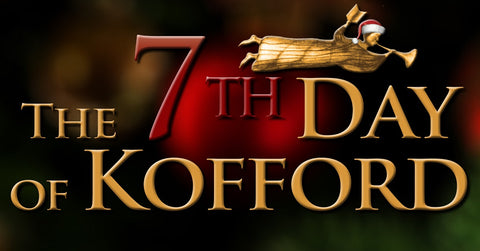
All polygamy titles are 30% off December 7th. These special prices are only available for one day, so don't wait!
Orders over $50 qualify for free shipping. Also, local Utah customers can opt to pick up their order directly from our office in Sandy (select this option under the shipping menu).
For more information about the Twelve Days of Kofford holiday sales, click here.
 |
Joseph Smith's Polygamy, Volume 1: History Now in paperback! Retail: $34.95 |
 |
Joseph Smith's Polygamy, Volume 2: History Now in paperback! Retail: $34.95 |
 |
Joseph Smith's Polygamy, Volume 3: Theology Now in paperback! Retail: $25.95 |
 |
Joseph Smith's Polygamy: Toward a Better Understanding Retail: $19.95 |
 |
Modern Polygamy and Mormon Fundamentalism: The Generations after the Manifesto Retail: $31.95 Best Book Award, John Whitmer Historical Association |
 |
Mormon Polygamous Families: Life in the Principle Retail: $24.95 |
 |
Prisoner for Polygamy: The Memoirs and Letters of Rudger Clawson at the Utah Territorial Penitentiary, 1884–87 Retail: $24.95 |
On the sixth day of Kofford: 30% off international Mormon studies titles! December 06 2016
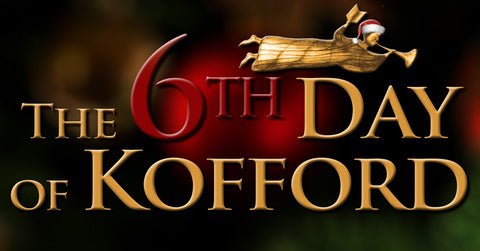
All international Mormon studies titles are 30% off December 6th. These special prices are only available for one day, so don't wait!
Orders over $50 qualify for free shipping. Also, local Utah customers can opt to pick up their order directly from our office in Sandy (select this option under the shipping menu).
For more information about the Twelve Days of Kofford holiday sales, click here.
 |
The Trek East: Mormonism Meets Japan, 1901–1968 Retail: $39.95 |
 |
Mormon and Maori Retail: $24.95 Best International Book Award, Mormon History Association |
 |
Tiki and Temple: The Mormon Mission in New Zealand, 1854–1958 Retail: $29.95 Best International Book Award, Mormon History Association |
 |
For the Cause of Righteousness: A Global History of Blacks and Mormonism, 1830–2013 Retail: $32.95 Best Book Award, Mormon History Association |
 |
The History of the Mormons in Argentina Retail: $24.95 |
 |
From Above and Below: The Mormon Embrace of Revolution, 1840 – 1940 Retail: $34.95 Best International Book Award, Mormon History Association |
Twelve Days of Kofford Christmas Sale 2016 November 30 2016

MERRY CHRISTMAS FROM GREG KOFFORD BOOKS
Greg Kofford Books is pleased to announce our annual holiday sale on select popular titles beginning December 1st – December 12th.
Here's how it works: at the stroke of midnight each day, a new blog post will go live on our website listing that day's special offerings along with a discount code that you can enter at check-out to get the holiday price. It's that simple. We will also be posting the daily offering and discount code on our Facebook page at 7am.
*Orders over $50 qualify for free shipping (continental U.S. customers only). Local Utah customers can stop by our office in Sandy to pick up their orders as well. Holiday inventory on some titles may be limited, so be sure to take advantage of the daily sale early.*
To help you plan in advance, here are our scheduled sales:
Day 1 — Brant Gardner titles
 |
Second Witness: Analytical & Contextual Commentary on the Book of Mormon series
|
 |
The Gift and Power: Translating the Book of Mormon |
 |
Traditions of the Fathers: The Book of Mormon as History Best Religious Non-fiction Award, Association for Mormon Letters |
Day 2 — Adam Miller titles (essays in Mormon theology)
 |
Rube Goldberg Machines: Essays in Mormon Theology Retail $18.95 |
 |
Future Mormon: Essays in Mormon Theology Retail: $18.95 |
Day 3 — Personal Essays
 |
Dead Wood and Rushing Water: Essays on Mormon Faith, Culture, and Family Retail: $22.95 |
 |
Mr. Mustard Plaster and Other Mormon Essays by Mary Lithgoe Bradford Retail: $20.95 Sale price: $14.67 |
 |
Writing Ourselves: Essays on Creativity, Craft, and Mormonism Retail: $18.95 |
Day 4 — Blake T. Ostler titles
 |
Exploring Mormon Thought series by Blake T. Ostler 30% off each title |
 |
Fire on the Horizon: A Meditation on the Endowment and Love of Atonement Retail: $17.95 |
Day 5 — Contemporary Studies in Scripture
 |
Authoring the Old Testament: Genesis — Deuteronomy Retail: $26.95 |
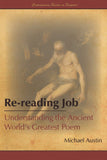 |
Re-reading Job: Understanding the Ancient World's Greatest Poem Retail: $20.95 |
 |
Search, Ponder, and Pray: A Guide to the Gospels Retail: $27.95 |
 |
Beholding the Tree of Life: A Rabbinic Approach to the Book of Mormon Retail: $21.95 |
 |
The Vision of All: Twenty-five Lectures on Isaiah in Nephi's Record Retail: $25.95 |
Day 6 — International Mormonism
 |
The Trek East: Mormonism Meets Japan, 1901–1968 Retail: $39.95 |
 |
Mormon and Maori Retail: $24.95 Best International Book Award, Mormon History Association |
 |
Tiki and Temple: The Mormon Mission in New Zealand, 1854–1958 Retail: $29.95 Best International Book Award, Mormon History Association |
 |
For the Cause of Righteousness: A Global History of Blacks and Mormonism, 1830–2013 Retail: $32.95 Best Book Award, Mormon History Association |
 |
The History of the Mormons in Argentina Retail: $24.95 |
 |
From Above and Below: The Mormon Embrace of Revolution, 1840 – 1940 Retail: $34.95 Best International Book Award, Mormon History Association |
Day 7 — Polygamy titles
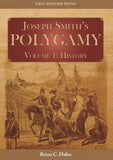 |
Joseph Smith's Polygamy: History and Theology Now in paperback! 30% off each title |
 |
Joseph Smith's Polygamy: Toward a Better Understanding Retail: $19.95 |
 |
Modern Polygamy and Mormon Fundamentalism: The Generations after the Manifesto Retail: $31.95 Best Book Award, John Whitmer Historical Association |
 |
Mormon Polygamous Families: Life in the Principle Retail: $24.95 |
 |
Prisoner for Polygamy: The Memoirs and Letters of Rudger Clawson at the Utah Territorial Penitentiary, 1884–87 Retail: $29.95 |
Day 8 — Contemporary Issues
 |
Women at Church: Magnifying LDS Women's Local Impact Retail: $21.95 |
 |
Common Ground—Different Opinions: Latter-day Saints and Contemporary Issues Retail: $31.95 |
 |
The Liberal Soul: Applying the Gospel of Jesus Christ in Politics Retail: $22.95 |
 |
Voices for Equality: Ordain Women and Resurgent Mormon Feminism Retail: $32.95 |
Day 9 — Biography
 |
Hugh Nibley: A Consecrated Life Retail: $32.95 Best Biography Award, Mormon History Association |
 |
“Swell Suffering”: A Biography of Maurine Whipple Retail: $31.95 Best Biography Award, Mormon History Association |
 |
William B. Smith: In the Shadow of a Prophet Retail: $39.95 Best Biography Award, John Whitmer Historical Association |
 |
The Man Behind the Discourse: A Biography of King Follett Retail: $29.95 |
Day 10 — War and Peace
 |
War & Peace in Our Time: Mormon Perspectives Retail: $29.95 |
 |
Even unto Bloodshed: An LDS Perspective on War Retail: $29.95 |
 |
The End of the World, Plan B: A Guide for the Future Retail: $13.95 |
 |
Saints of Valor: Mormon Medal of Honor Recipients, Updated 2nd Edition Retail: $31.95 |
Day 11 — Mormon Image in Literature
 |
The Mormoness; Or, The Trials Of Mary Maverick: A Narrative Of Real Events Retail: $12.95 |
 |
Boadicea; the Mormon Wife: Life Scenes in Utah Retail: $15.95 |
Day 12 — Ebook Flash Sale — $1.99 for select titles
To be announced. Stay tuned!
New from The Mormon Image in Literature Series: Boadicea — now available! July 14 2016

NOW AVAILABLE from The Mormon Image in Literature series:
Boadicia; The Mormon Wife: Life-Scenes in Utah
by Alfreda Eva Bell
Edited and annottated by Michael Austin and Ardis E. Parshall
About the series:
The Mormon Image in Literature reprints important literary works by and about Mormons—from the sensational anti-polygamy books and dime novels of the Civil War era to the first attempts of Mormon writers to craft a regional literature in their Great Basin kingdom. Each volume contains a critical introduction, helpful annotations, and multiple appendices that enlighten and enliven the text. These volumes have been designed for both Mormon and non-Mormon readers who want to understand the cultural importance of Mormonism during the first Latter-day Saint century.
From series co-editer, Michael Austin:
“Much of this work will be just as interesting to historians as to scholars of literature. In fact, some of the work with the least literary merit has the greatest historical interest. Boadicea: The Mormon Wife, which will be the second volume in the series, will probably never be accused of literary greatness. But it has been written about by some of the top figures in Mormon History: Leonard Arrington, Terryl Givens, Sarah Barringer Gordon, Paul W. Reeve.
The literature of the 19th century had very little subtlety when it came to portraying Mormons. The overwhelming majority of volumes featured Mormon elders living in harems and forming Danite bands to hunt down and kill dissenters. And this was not just in the tawdry literature. Both Robert Louis Stevenson and Arthur Conan Doyle wrote novels that portrayed Mormons in these ways.”
Read the complete Q&A here.

Boadicea; the Mormon Wife: Life-Scenes in Utah
Part of The Mormon Image in Literature series
by Alfreda Eva Bell
Edited by Michael Austin and Ardis E. Parshall
151 Pages
ISBN 978-1-58958-566-9
$15.95 (paperback)
Also available in ebook
First published in 1855, Boadicea; the Mormon Wife belongs to a sub-genre of crime fiction that flourished in the Eastern United States during the 1850s. Boadicea has become increasingly important to scholars of Mormonism because it gives us a glimpse of the Mormon image in literature immediately after the Church’s public acknowledgement of plural marriage. Over the next half century, this image would be sharpened and refined by writers with different rhetorical goals: to end polygamy, to attack Mormon theology, or just to tell a highly entertaining adventure story. In Boadicea, though, we see these tropes in their infancy, through a prolific author working at break-neck speed to imagine the lives of a strange people for readers willing to pay the “extremely low price of 15 cents” for the privilege of being amazed by stories of polygyny and polyandry, along with generous helpings of adultery, seduction, kidnapping, and no fewer than fourteen untimely but spectacular deaths: people are shot, stabbed, bludgeoned, poisoned, hanged, strangled, and drowned. No other novel of the nineteenth century comes anywhere near Boadicea in portraying Mormon society as violent, chaotic, and dysfunctional.
Preview Boadicea
About the series editors:
Michael Austin is the author or editor of seven books and more than 50 articles, book chapters, and reviews, including Re-reading Job: Understanding the Ancient World’s Greatest Poem. He is currently the Provost and Vice President of Academic Affairs at Newman University in Wichita, Kansas.
Ardis E. Parshall is a historian, freelance researcher specializing in Mormon history, and author. She co-edited with Paul Reeve Mormonism: A Historical Encyclopedia and is currently writing She Shall Be an Ensign, a history of the LDS Church told through the lives of Mormon women. She blogs at Keepapitchinin.
Year in Review and the Year Ahead December 29 2015
2015 was another amazing year for Greg Kofford Books! Here is a recap of the year and a look ahead to what is coming in 2016 and beyond.
Award-winning Publications
Several Kofford titles won awards from the Mormon History Association and the Association for Mormon Letters in 2015:
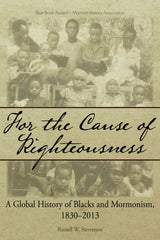 |
MHA Best Book Award For the Cause of Righteousness: A Global History of Blacks and Mormonism, 1830-2013 “Invaluable as a historical resource.” — Terryl L. Givens, author of Parley P. |
 |
MHA Best International Book Award Mormon and Maori “Unflinchingly honest yet unfailingly compassionate.” — Grant Underwood, |
 |
AML Religious Non-Fiction Award Re-reading Job: Understanding the Ancient World's Greatest Poem “A new gold standard for Mormon writings.” — Julie M. Smith, author, Search, |
All 2015 Titles
Here are all of the great titles that Greg Kofford Books published this past year:
 |
Mr. Mustard Plaster and Other Mormon Essays “Vibrant portraits of a kind and loving soul.” — Boyd J. Peterson, author of |
 |
Perspectives on Mormon Theology: Scriptural Theology Each essay takes up the relatively un-self-conscious work of reading a |
 |
Joseph Smith's Polygamy: Toward a Better Understanding “It is a book that will be read and discussed for years to come.” — Robert L. |
 |
Even Unto Bloodshed: An LDS Perspective on War “Indispensable for all future Mormon discussions of the subject.” — Daniel C. |
 |
William B. Smith: In the Shadow of a Prophet “Walker’s biography will become essential reading.” — Mark Staker, author of |
 |
Voices for Equality: Ordain Women and Resurgent Mormon Feminism “Timely, incisive, important.” — Joanna Brooks, co-editor of Mormon |
 |
Traditions of the Fathers: The Book of Mormon as History “Illuminating, prismatic views of the Book of Mormon.” — Mark Alan Wright, |
Looking Ahead at 2016 and Beyond
Here are a few eagerly-anticipated titles currently scheduled for the first part of 2016 and a look at what is in the works for the future:
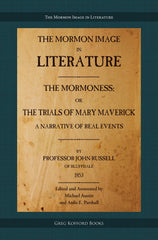 |
The Mormon Image in Literature Series The Mormoness; Or, The Trials Of Mary Maverick: A Narrative Of Real Events Published in 1853, the first American novel about the Mormons is also one of |
 |
The End of the World, Plan B: A Guide for the Future Environmental decline, political gridlock, war and rumors of war, decadence, |
Also forthcoming...
More volumes are in the works for our The Mormon Image in Literature, Contemporary Studies in Scripture, and Perspectives on Mormon Theology series.
Saints, Slaves, and Blacks by Newell G. Bringhurst, revised and updated
Lot Smith: Utah Hero, Arizona Colonizer by Carmen Smith and Talana Hooper
The Trek East: Mormonism Meets Japan, 1901-1968 by Shinji Takagi
Science the Key to Theology by Steven L. Peck
And much, much more...
Thank you for making 2015 exceptional and we are excited about 2016!
Greg Kofford Books Award-Winning Titles June 12 2015
Since its first publication in 2001, Greg Kofford Books has established a reputation as a publisher of consistently award-winning titles in Mormon history and literature. Check out this comprehensive list of each of our books that has received an award:

2015 Best Book Award, Mormon History Association:For the Cause of Righteousness: A Global History of Blacks and Mormonism, 1830-2013, by Russell Stevenson. 
2015 Best International Book Award, Mormon History Association: Mormon and Maori, by Marjorie Newton.
2014 Best Religious Non-fiction Award, Association for Mormon Letters: Re-reading Job: Understanding the Ancient World's Greatest Poem, by Michael Austin. 
2014 Best International Book Award, Mormon History Association: From Above and Below: The Mormon Embrace of Revolution, 1840-1940, by Craig Livingston.
2013 Best International Book Award, Mormon History Association: Tiki and Temple: The Mormon Mission in New Zealand, 1854-1958, by Marjorie Newton. 
2012 Best Biography Award, Mormon History Association: Swell Suffering: A Biography of Maureen Whipple, by Veda Tebbs Hale.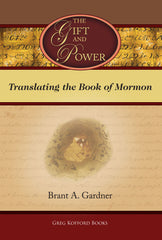
2011 Best Criticism Award, Association for Mormon Letters: The Gift and Power: Translating the Book of Mormon, by Brant Gardner. 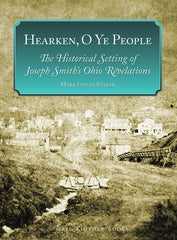
2011 Best Book Awards, Mormon History Association and John Whitmer Historical Association: Hearken O Ye People: The Historical Setting of Joseph Smith's Ohio Revelations, by Mark Staker. 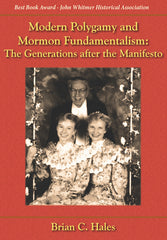
2007 Best Book Award, John Whitmer Historical Association: Modern Polygamy and Mormon Fundamentalism: The Generations after the Manifesto, by Brian Hales. 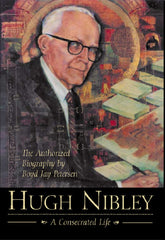
2003 Best Biography Award, Mormon History Association: Hugh Nibley: A Consecrated Life, by Boyd Petersen.








